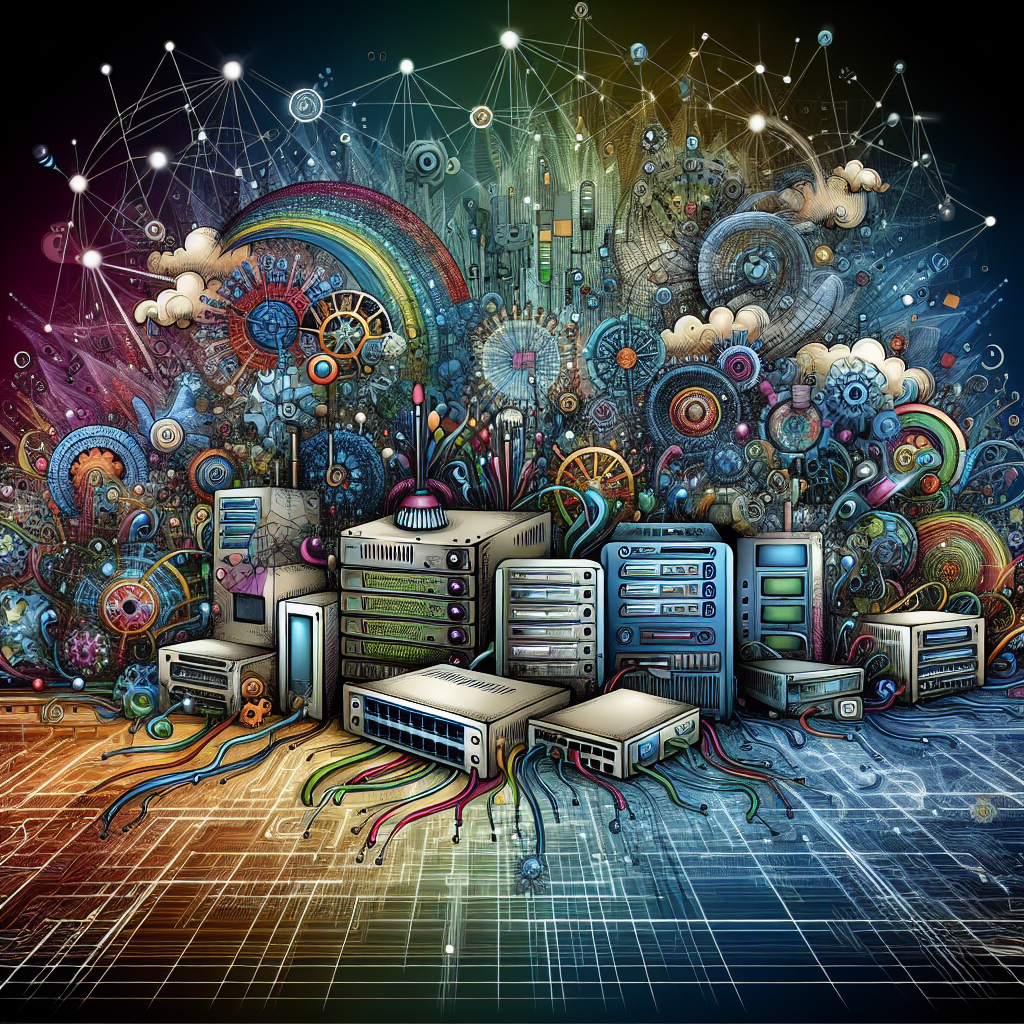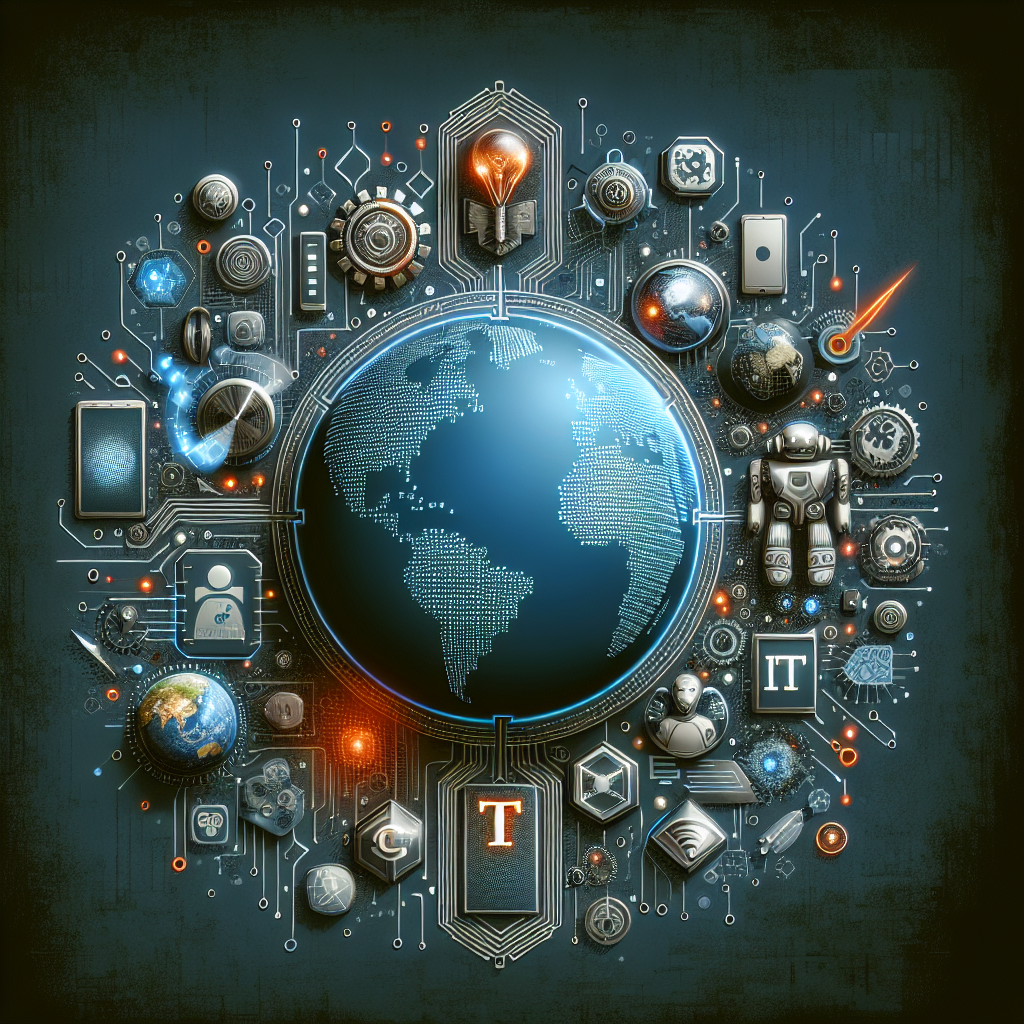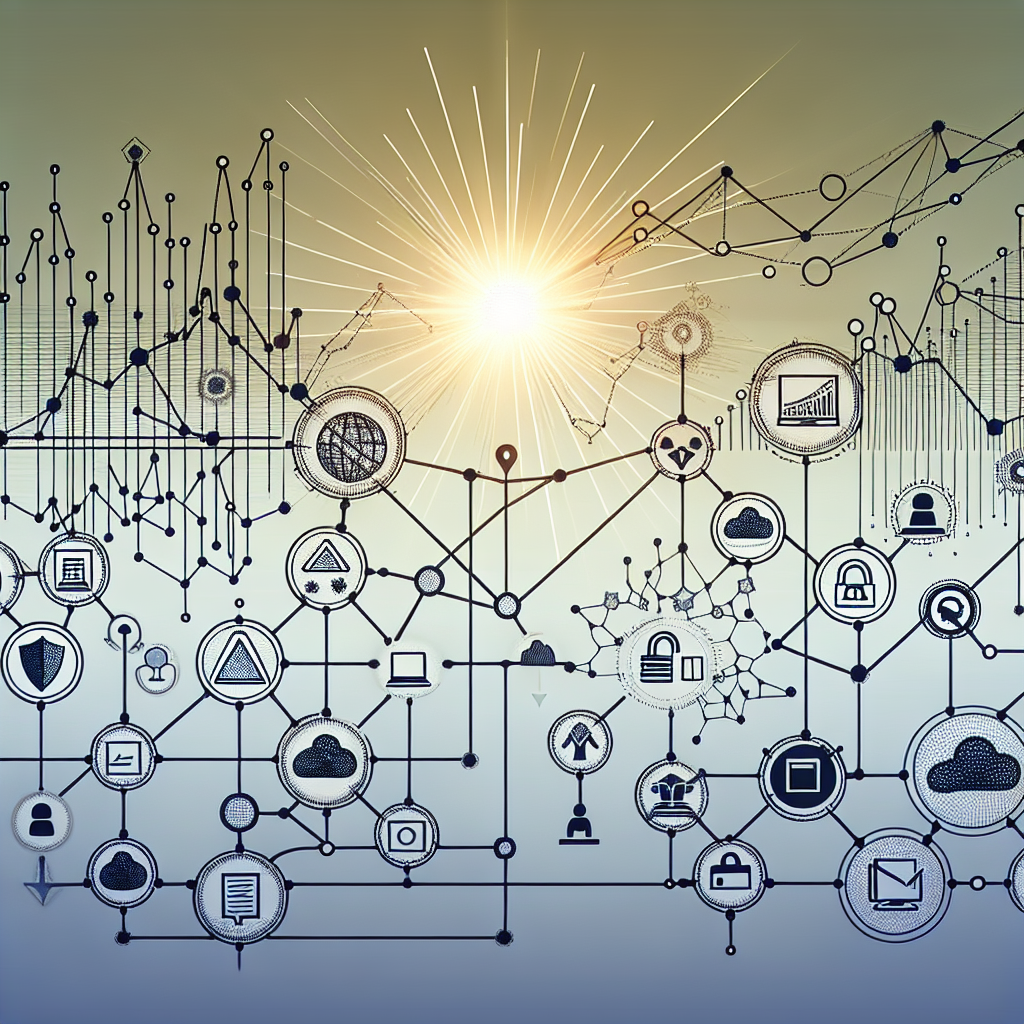Your cart is currently empty!
Tag: Technologies

The Top Tools and Technologies for Proactive Maintenance
Proactive maintenance is an essential practice for businesses looking to minimize downtime, increase efficiency, and reduce costs associated with unexpected breakdowns. By utilizing the right tools and technologies, companies can stay ahead of potential issues and ensure their equipment is running smoothly. Here are some of the top tools and technologies for proactive maintenance:1. Predictive maintenance software: Predictive maintenance software uses advanced algorithms and machine learning to analyze data from equipment sensors and predict when maintenance is needed. This allows businesses to schedule maintenance before a breakdown occurs, reducing downtime and avoiding costly repairs.
2. Condition monitoring sensors: Condition monitoring sensors can be attached to equipment to track performance metrics such as temperature, vibration, and energy consumption. By monitoring these metrics in real-time, businesses can identify potential issues early and take proactive steps to address them.
3. Asset management systems: Asset management systems help businesses track and manage their equipment inventory, maintenance schedules, and service history. By centralizing this information in one system, companies can easily identify which assets require maintenance and when, leading to more efficient maintenance practices.
4. Remote monitoring tools: Remote monitoring tools allow businesses to track equipment performance and receive alerts on their mobile devices or desktop computers. This enables maintenance teams to quickly respond to issues, even when they are not on-site, reducing downtime and improving overall equipment reliability.
5. Augmented reality (AR) maintenance tools: AR maintenance tools use augmented reality technology to provide maintenance technicians with real-time instructions, schematics, and troubleshooting guides. This helps technicians perform maintenance tasks more efficiently and accurately, leading to faster repairs and increased equipment uptime.
6. Internet of Things (IoT) devices: IoT devices can be embedded in equipment to collect and transmit data on performance, usage, and maintenance needs. By connecting equipment to the internet, businesses can access real-time data and analytics to make more informed maintenance decisions.
In conclusion, proactive maintenance is a critical strategy for businesses looking to maximize equipment uptime and reduce maintenance costs. By leveraging the right tools and technologies, companies can stay ahead of potential issues and ensure their equipment is running smoothly. From predictive maintenance software to IoT devices, there are a variety of tools available to help businesses implement proactive maintenance practices and achieve operational excellence.

The Future of Technical Support: Innovations and Technologies to Watch
Technical support has come a long way over the years, evolving from a simple phone call to a help desk to a complex ecosystem of technologies that enable organizations to provide faster, more efficient support to their customers. As we look to the future, it’s clear that technical support will continue to evolve, driven by advancements in technology and changing customer expectations.One of the key innovations that is shaping the future of technical support is artificial intelligence (AI). AI-powered chatbots and virtual assistants are becoming increasingly common in technical support, allowing customers to get help quickly and efficiently without having to wait for a human agent. These AI-powered tools can understand natural language queries, provide step-by-step troubleshooting guides, and even proactively detect and resolve issues before they become a problem for the customer.
Another technology that is revolutionizing technical support is remote support tools. With the rise of remote work and distributed teams, organizations are increasingly turning to remote support tools to help their customers troubleshoot technical issues from anywhere in the world. These tools allow support agents to remotely access a customer’s device, diagnose the problem, and even fix it without the need for the customer to bring their device to a physical location.
In addition to AI and remote support tools, the future of technical support will also be shaped by advancements in augmented reality (AR) and virtual reality (VR) technologies. AR and VR have the potential to revolutionize technical support by allowing customers to visualize complex technical issues and receive step-by-step guidance on how to resolve them. For example, a customer could use a VR headset to receive virtual hands-on training on how to set up a new device or troubleshoot a software issue.
As organizations continue to invest in these cutting-edge technologies, the future of technical support looks bright. Customers can expect faster, more efficient support that is tailored to their needs and preferences, while organizations can benefit from increased productivity, reduced costs, and improved customer satisfaction. By staying ahead of the curve and embracing these innovations, organizations can ensure that they are well-positioned to provide top-notch technical support in the years to come.

Top Network Management Tools and Technologies for Businesses
In today’s digital world, businesses rely heavily on their networks to communicate, collaborate, and conduct business. Managing these networks effectively is essential to ensure smooth operations and prevent downtime. To help businesses in this endeavor, there are a plethora of network management tools and technologies available that can simplify the process and ensure optimal performance. In this article, we will explore some of the top network management tools and technologies that businesses can utilize to streamline their network operations.1. SolarWinds Network Performance Monitor (NPM): SolarWinds NPM is a comprehensive network monitoring tool that provides real-time visibility into network performance and health. It allows businesses to monitor network devices, interfaces, and traffic to identify issues and troubleshoot problems quickly. With features like customizable dashboards, alerts, and reports, SolarWinds NPM is a powerful tool for managing networks of all sizes.
2. Cisco Prime Infrastructure: Cisco Prime Infrastructure is a network management tool designed specifically for Cisco networks. It provides a centralized platform for monitoring, configuring, and troubleshooting Cisco devices, making it easier for businesses to manage their network infrastructure. With features like automated device provisioning and network mapping, Cisco Prime Infrastructure simplifies network management tasks and improves efficiency.
3. Paessler PRTG Network Monitor: PRTG Network Monitor is a comprehensive network monitoring tool that provides real-time monitoring of network devices, applications, and services. It offers customizable dashboards, alerts, and reports to help businesses track network performance and identify issues before they impact operations. With support for a wide range of devices and protocols, PRTG Network Monitor is a versatile tool for managing networks of all types.
4. ManageEngine OpManager: OpManager is a network management tool that offers comprehensive monitoring and management capabilities for networks of all sizes. It provides real-time visibility into network performance, traffic, and devices, allowing businesses to identify and resolve issues quickly. With features like network mapping, automated discovery, and customizable dashboards, OpManager is a powerful tool for managing complex network environments.
5. Nagios XI: Nagios XI is a popular network monitoring tool that provides real-time monitoring and alerting for network devices, applications, and services. It offers a customizable dashboard, robust reporting capabilities, and integration with third-party tools to streamline network management tasks. With support for multiple protocols and devices, Nagios XI is a versatile tool for businesses looking to monitor and manage their network infrastructure effectively.
In conclusion, network management tools and technologies play a crucial role in helping businesses manage their network infrastructure effectively. By utilizing tools like SolarWinds NPM, Cisco Prime Infrastructure, Paessler PRTG Network Monitor, ManageEngine OpManager, and Nagios XI, businesses can streamline network operations, improve performance, and prevent downtime. Whether you have a small office network or a large enterprise network, investing in a reliable network management tool can help you ensure that your network runs smoothly and efficiently.

The Top Tools and Technologies for Implementing Proactive Maintenance
Proactive maintenance is a strategy used by many companies to prevent equipment failures and minimize downtime. By implementing proactive maintenance, companies can save time and money by addressing issues before they become major problems. To effectively implement proactive maintenance, companies should utilize the top tools and technologies available in the market.One of the top tools for implementing proactive maintenance is a computerized maintenance management system (CMMS). A CMMS is a software program that helps companies track and manage their maintenance operations. It can help with scheduling preventive maintenance tasks, tracking equipment performance, and managing work orders. By using a CMMS, companies can better plan and execute their maintenance activities, leading to improved equipment reliability and reduced downtime.
Another important tool for proactive maintenance is condition monitoring equipment. Condition monitoring equipment, such as vibration sensors, infrared cameras, and oil analysis kits, can help companies detect early signs of equipment failure. By monitoring the condition of equipment regularly, companies can identify potential issues before they lead to costly breakdowns. Condition monitoring equipment can also help companies optimize their maintenance schedules by allowing them to perform maintenance tasks only when necessary.
Predictive maintenance software is another key technology for implementing proactive maintenance. Predictive maintenance software uses data analytics and machine learning algorithms to predict when equipment is likely to fail. By analyzing historical data and equipment performance metrics, predictive maintenance software can help companies identify patterns and trends that indicate potential failures. This allows companies to take proactive measures to address issues before they impact operations.
IoT (Internet of Things) technology is also a valuable tool for implementing proactive maintenance. IoT technology enables companies to connect equipment and devices to the internet, allowing them to collect real-time data on equipment performance. By using IoT technology, companies can monitor equipment remotely, receive alerts when issues arise, and analyze data to identify trends and patterns. This can help companies improve their maintenance practices and make informed decisions about when to perform maintenance tasks.
Overall, implementing proactive maintenance requires the use of the top tools and technologies available in the market. By utilizing tools such as CMMS, condition monitoring equipment, predictive maintenance software, and IoT technology, companies can effectively prevent equipment failures, minimize downtime, and improve overall equipment reliability. Investing in these tools and technologies can help companies save time and money in the long run, making proactive maintenance a worthwhile strategy for any business.

The Future of IT Consulting: Emerging Technologies and Trends
The field of IT consulting is constantly evolving, with new technologies and trends shaping the way businesses operate and succeed in today’s digital landscape. As we look to the future, several emerging technologies and trends are expected to have a significant impact on the IT consulting industry.One of the most notable trends in IT consulting is the rise of artificial intelligence (AI) and machine learning. These technologies are revolutionizing the way businesses analyze data, automate processes, and make decisions. AI and machine learning are enabling IT consultants to provide more personalized and efficient solutions to their clients, leading to improved business outcomes.
Another emerging technology that is set to transform the IT consulting industry is the Internet of Things (IoT). IoT devices are becoming increasingly common in both consumer and industrial settings, creating a massive amount of data that needs to be managed and analyzed. IT consultants are leveraging IoT technologies to help businesses improve efficiency, reduce costs, and enhance customer experiences.
Blockchain is another technology that is expected to have a significant impact on the future of IT consulting. Blockchain technology provides a secure and transparent way to record transactions, making it ideal for industries such as finance, healthcare, and supply chain management. IT consultants are helping businesses implement blockchain solutions to improve security, reduce fraud, and streamline operations.
Cloud computing is another trend that is shaping the future of IT consulting. Cloud computing allows businesses to access computing resources on-demand, enabling greater flexibility, scalability, and cost-efficiency. IT consultants are helping businesses migrate to the cloud, optimize their cloud infrastructure, and leverage cloud services to drive innovation and growth.
As the IT consulting industry continues to evolve, it is essential for professionals in the field to stay abreast of emerging technologies and trends. By embracing AI, IoT, blockchain, and cloud computing, IT consultants can provide their clients with innovative solutions that drive business success in the digital age.
In conclusion, the future of IT consulting is bright, with emerging technologies and trends set to revolutionize the industry. By embracing AI, IoT, blockchain, and cloud computing, IT consultants can help businesses thrive in today’s fast-paced and ever-changing digital landscape. It is an exciting time to be in the field of IT consulting, and professionals who stay ahead of the curve will be well-positioned for success in the years to come.

The Future of Technical Support: Trends and Technologies to Watch
Technical support is an essential component of any company’s operations, providing assistance to users who encounter issues with their products or services. As technology continues to evolve at a rapid pace, the future of technical support is also changing. Here are some key trends and technologies to watch in the coming years.One of the most significant trends in technical support is the increasing use of artificial intelligence (AI) and machine learning. These technologies can help automate routine tasks, such as troubleshooting common issues or providing basic information to users. AI-powered chatbots, for example, can interact with customers in real-time and provide solutions to their problems without the need for human intervention. This not only improves efficiency but also enhances the overall user experience.
Another emerging trend in technical support is the use of augmented reality (AR) and virtual reality (VR) technologies. These immersive technologies enable support technicians to remotely assist users by providing visual guidance and instructions. For example, a technician could use AR glasses to overlay step-by-step instructions on a user’s screen, making it easier for them to resolve complex issues.
Additionally, the Internet of Things (IoT) is revolutionizing technical support by enabling proactive monitoring and maintenance of devices. IoT-connected devices can send real-time data to support teams, allowing them to identify and address potential issues before they escalate. This predictive maintenance approach not only reduces downtime for users but also helps companies optimize their support operations.
Furthermore, blockchain technology is also being explored as a way to enhance technical support. By using blockchain to create a secure and transparent record of transactions and interactions, companies can improve accountability and trust in their support processes. This can help to streamline dispute resolution and build stronger relationships with customers.
As the future of technical support continues to evolve, it is crucial for companies to stay informed about these trends and technologies. By embracing innovation and adopting new tools and strategies, businesses can enhance their support capabilities and deliver a seamless experience for their users. Ultimately, the future of technical support lies in harnessing the power of AI, AR, IoT, and blockchain to create more efficient and effective support systems.

The Future of Managed Service Providers: Innovations and Emerging Technologies
Managed Service Providers (MSPs) play a critical role in helping businesses navigate the complexities of technology management. As technology continues to evolve at a rapid pace, MSPs are constantly looking for ways to innovate and stay ahead of the curve. In this article, we will explore the future of MSPs, including the innovations and emerging technologies that are shaping the industry.One of the key trends driving the future of MSPs is the increasing complexity and diversity of technology ecosystems. Businesses today rely on a wide range of technologies, from cloud computing and artificial intelligence to Internet of Things (IoT) devices and cybersecurity solutions. Managing these technologies can be a daunting task for many organizations, which is where MSPs come in. By offering a comprehensive suite of services, MSPs can help businesses effectively manage and optimize their technology stack.
In order to meet the evolving needs of their clients, MSPs are embracing a number of innovative technologies. For example, many MSPs are investing in automation tools and artificial intelligence to streamline their operations and improve efficiency. By automating routine tasks such as software updates and security patches, MSPs can free up their resources to focus on more strategic initiatives.
Another key trend in the MSP industry is the rise of specialized service offerings. As businesses become increasingly reliant on specific technologies, such as cloud computing or cybersecurity, MSPs are developing specialized expertise in these areas. By offering targeted services that address the unique needs of their clients, MSPs can differentiate themselves in a crowded market and provide greater value to their customers.
In addition to automation and specialization, MSPs are also exploring the potential of emerging technologies such as blockchain and edge computing. Blockchain technology, for example, has the potential to revolutionize the way MSPs manage and secure sensitive data. By leveraging blockchain’s decentralized ledger system, MSPs can provide greater transparency and security for their clients’ data.
Edge computing, on the other hand, is poised to transform the way MSPs deliver services to their clients. By bringing computing power closer to the source of data, edge computing enables faster processing and reduced latency, which is critical for applications such as IoT devices and real-time analytics.
Overall, the future of MSPs is bright and full of opportunity. By embracing innovation and leveraging emerging technologies, MSPs can continue to provide value to their clients and stay ahead of the competition. As businesses continue to adopt new technologies and digital transformation becomes increasingly important, MSPs will play a crucial role in helping organizations navigate this rapidly changing landscape.

The Future of Managed Service Providers: Emerging Technologies and Trends.
Managed Service Providers (MSPs) have become an integral part of the modern business landscape, providing companies with a wide range of IT services and support. As technology continues to evolve at a rapid pace, the role of MSPs is also evolving, with new technologies and trends shaping the future of the industry.One of the key emerging technologies that is set to revolutionize the MSP industry is artificial intelligence (AI). AI has the potential to automate routine tasks, improve the efficiency of operations, and enhance the overall customer experience. MSPs are increasingly integrating AI-powered tools and solutions into their service offerings to provide more proactive and predictive support to their clients.
Another important trend that is shaping the future of MSPs is the rise of cloud computing. Cloud services offer businesses greater flexibility, scalability, and cost-effectiveness, making them an attractive option for companies looking to streamline their IT operations. MSPs are leveraging cloud technology to deliver a wide range of services, from data storage and backup to software-as-a-service solutions.
Cybersecurity is also a top priority for MSPs, as the threat landscape continues to evolve and become more sophisticated. MSPs are investing in advanced security technologies and solutions to protect their clients’ data and infrastructure from cyber threats. With the increasing number of cyber attacks targeting businesses of all sizes, MSPs play a critical role in helping companies strengthen their security posture and mitigate risks.
As the demand for managed services continues to grow, MSPs are also expanding their service offerings to meet the evolving needs of their clients. From managed network services to disaster recovery and business continuity solutions, MSPs are providing a comprehensive suite of services to help businesses stay ahead of the curve.
In conclusion, the future of Managed Service Providers is bright, with emerging technologies and trends shaping the industry and transforming the way businesses manage their IT operations. By embracing AI, cloud computing, cybersecurity, and expanding their service offerings, MSPs are well-positioned to help companies navigate the complex and rapidly changing technology landscape. As businesses increasingly rely on technology to drive growth and innovation, MSPs will play a crucial role in supporting their clients’ success in the digital age.

Top Tools and Technologies for Successful Network Management
Network management is a crucial aspect of any organization’s IT infrastructure. In today’s digital age, businesses rely heavily on their networks to communicate, collaborate, and conduct business operations. Therefore, having the right tools and technologies in place to manage and monitor your network is essential for ensuring optimal performance, security, and reliability.Here are some of the top tools and technologies that can help organizations achieve successful network management:
1. Network monitoring software: Network monitoring software is a must-have tool for any organization looking to ensure the health and performance of their network. These tools provide real-time insights into the status of your network, including bandwidth usage, device health, and security alerts. Popular network monitoring tools include SolarWinds, PRTG Network Monitor, and Nagios.
2. Network performance management tools: Network performance management tools help organizations optimize the performance of their network by monitoring and analyzing key metrics such as latency, packet loss, and throughput. These tools can help identify bottlenecks, optimize network configurations, and ensure a seamless user experience. Examples of network performance management tools include Riverbed SteelCentral, Cisco Prime Infrastructure, and ExtraHop.
3. Network security tools: Network security is a top priority for organizations, especially with the rise of cyber threats and data breaches. Network security tools help organizations protect their network from unauthorized access, malware, and other security threats. Some popular network security tools include firewalls, intrusion detection systems (IDS), and antivirus software.
4. Network automation tools: Network automation tools help organizations streamline and automate network management tasks, such as configuration management, provisioning, and troubleshooting. These tools can help reduce human error, increase efficiency, and improve network reliability. Popular network automation tools include Ansible, Puppet, and Chef.
5. Cloud-based network management platforms: Cloud-based network management platforms offer organizations the flexibility and scalability to manage their network from anywhere, at any time. These platforms provide centralized visibility and control over network resources, making it easier to monitor and manage complex network environments. Examples of cloud-based network management platforms include Cisco Meraki, Aruba Central, and Juniper Mist.
In conclusion, having the right tools and technologies in place is essential for successful network management. By investing in network monitoring software, performance management tools, security tools, automation tools, and cloud-based platforms, organizations can ensure the health, performance, and security of their network infrastructure. With the right tools in place, organizations can proactively manage their network, prevent downtime, and deliver a seamless user experience.

Harnessing the Power of Data with Remote Monitoring Technologies
In today’s digital age, data is king. Businesses across all industries are leveraging the power of data to drive decision-making, improve efficiency, and enhance customer experiences. One of the key technologies that is enabling businesses to harness the power of data is remote monitoring.Remote monitoring technologies allow businesses to collect real-time data from various sources, such as sensors, devices, and equipment, regardless of their location. This data can then be analyzed to gain valuable insights and inform strategic decisions.
One of the key benefits of remote monitoring technologies is their ability to provide businesses with a holistic view of their operations. By collecting data from multiple sources, businesses can gain a comprehensive understanding of their processes, identify inefficiencies, and pinpoint areas for improvement.
For example, in the manufacturing industry, remote monitoring technologies can be used to track machine performance, monitor production output, and detect potential issues before they escalate. This proactive approach to maintenance can help businesses minimize downtime, reduce costs, and improve overall productivity.
In the healthcare sector, remote monitoring technologies are being used to track patient vital signs, monitor medication adherence, and provide real-time feedback to healthcare providers. This not only improves patient outcomes but also enables healthcare organizations to optimize their resources and deliver more personalized care.
Furthermore, remote monitoring technologies can also help businesses comply with regulatory requirements, enhance safety measures, and mitigate risks. By continuously monitoring data in real-time, businesses can quickly identify any deviations from standards or potential safety hazards and take immediate action to address them.
Overall, harnessing the power of data with remote monitoring technologies can provide businesses with a competitive advantage in today’s fast-paced and data-driven world. By leveraging real-time insights, businesses can make informed decisions, optimize their operations, and deliver better experiences for their customers. As technology continues to evolve, the possibilities for remote monitoring and data analytics are endless, and businesses that embrace these technologies will undoubtedly thrive in the digital age.
